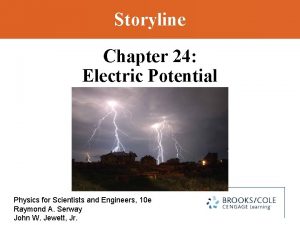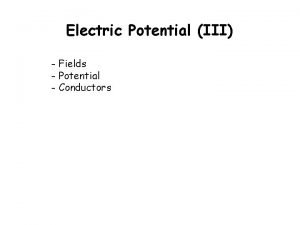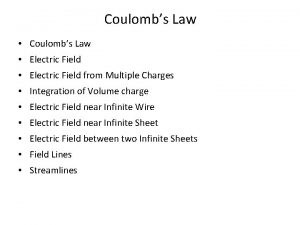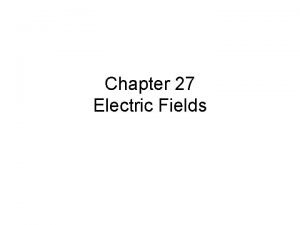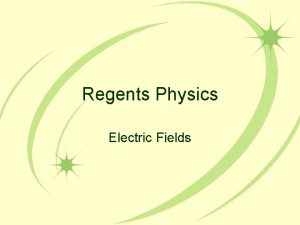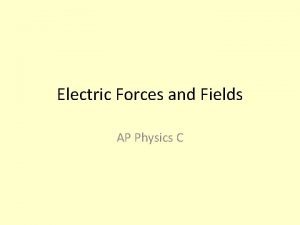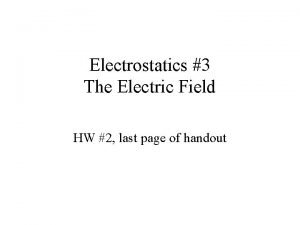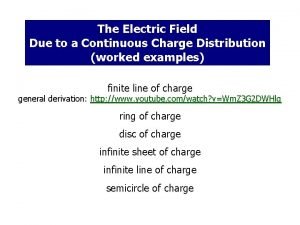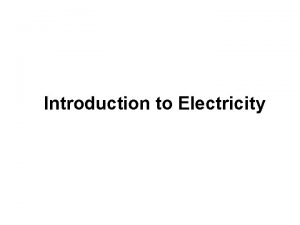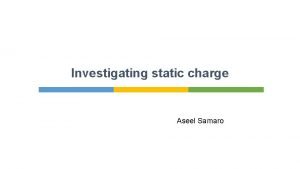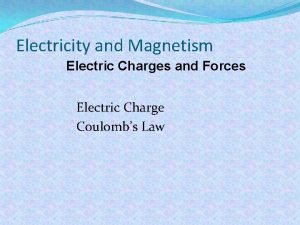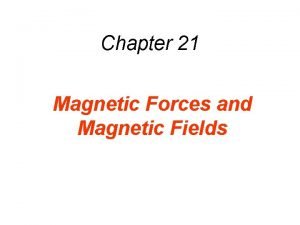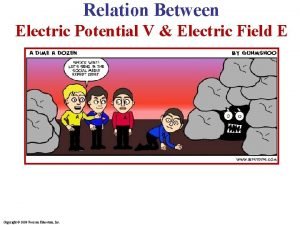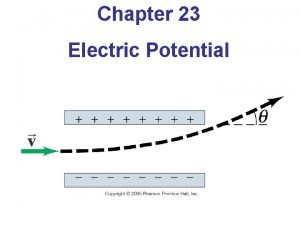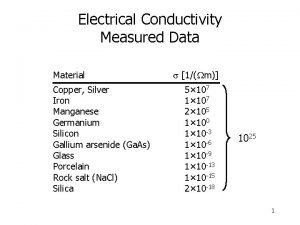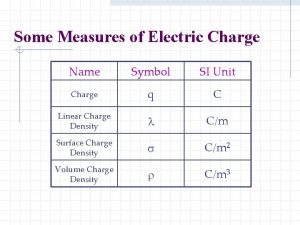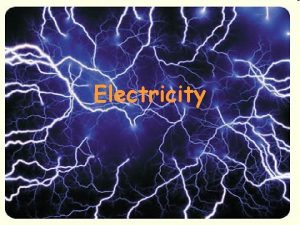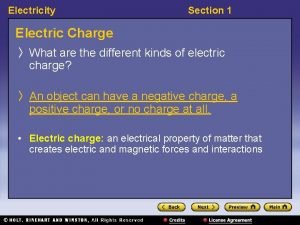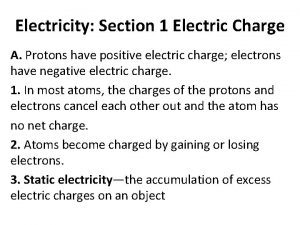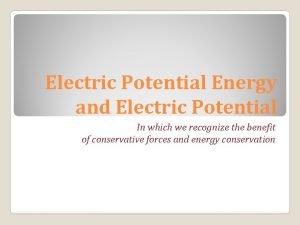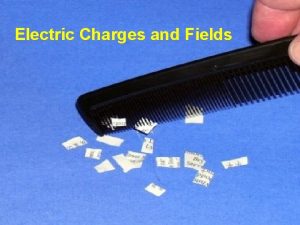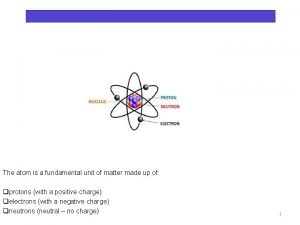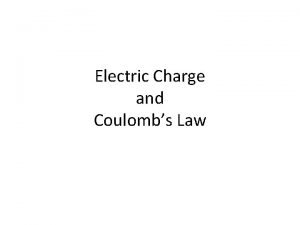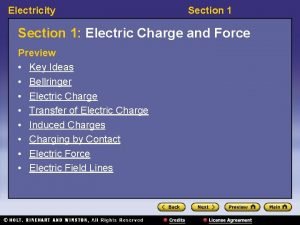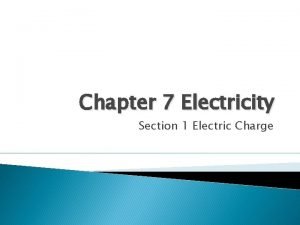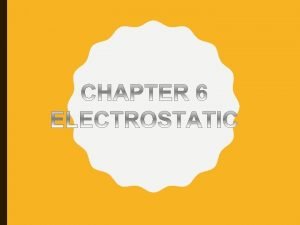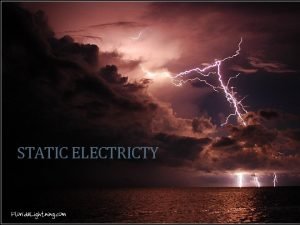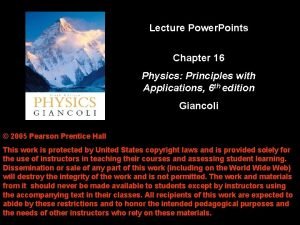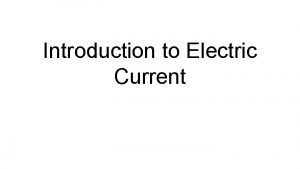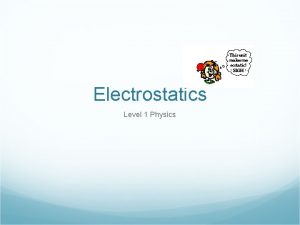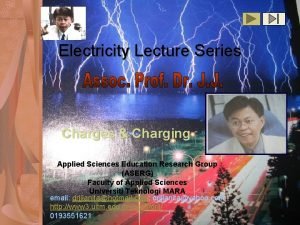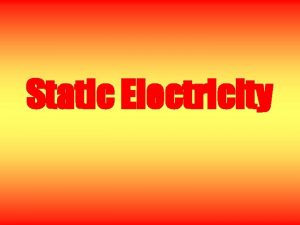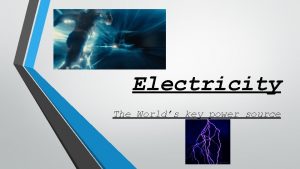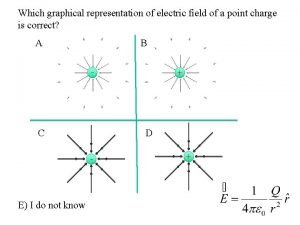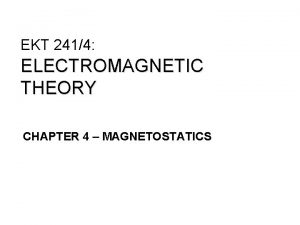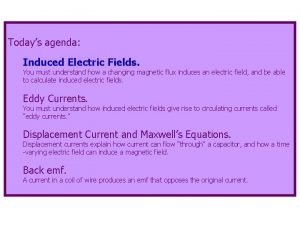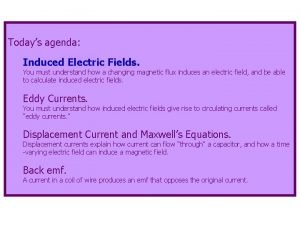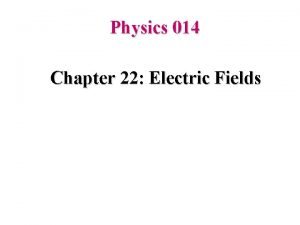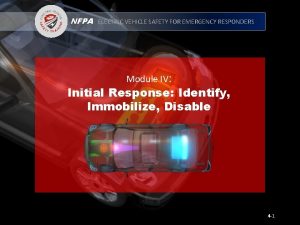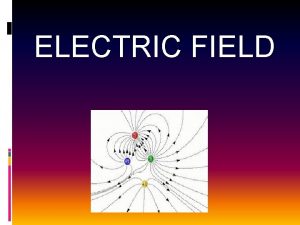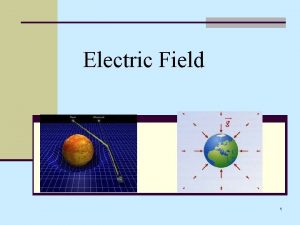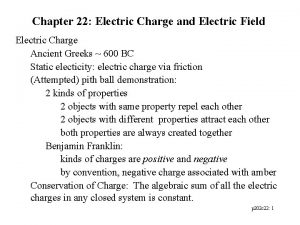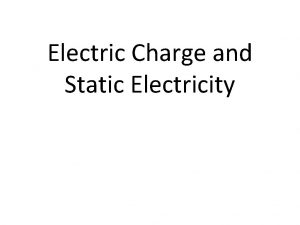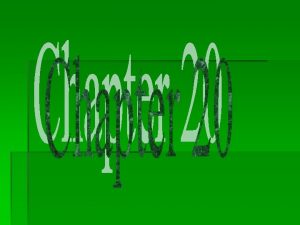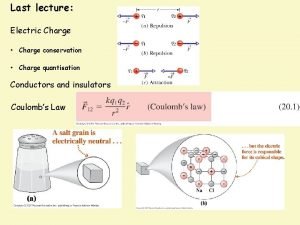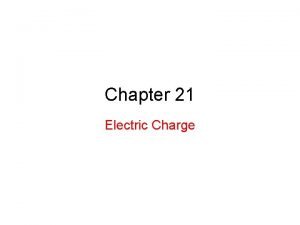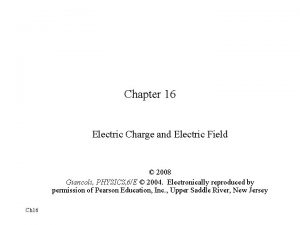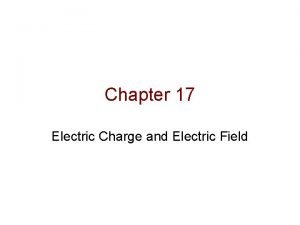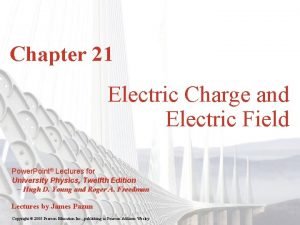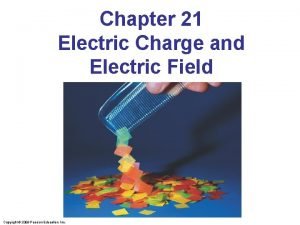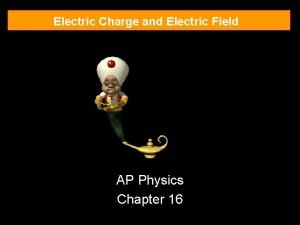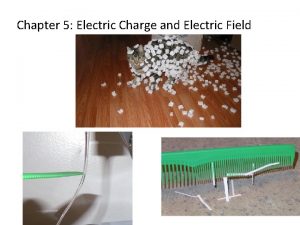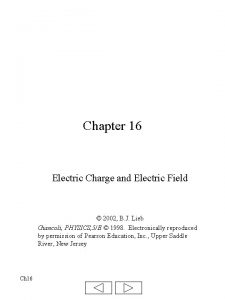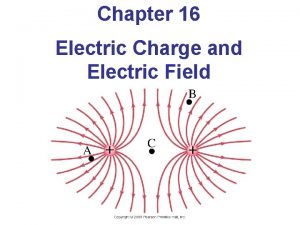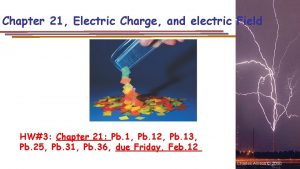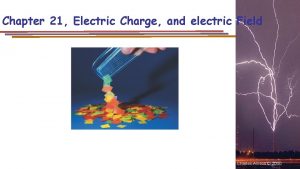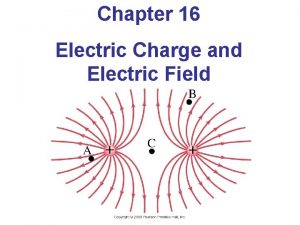Chapter 21 Electric Charge and Electric Field Interaction






































































- Slides: 70

Chapter 21 Electric Charge and Electric Field

Interaction of Electric Charge

Charging an object • A glass rod is rubbed with • • • silk Electrons are transferred from the glass to the silk Each electron adds a negative charge to the silk An equal positive charge is left on the rod

Charge + Unit: C, Coulomb −

Electric Charge Electric charge is one of the fundamental attributes of the particles of which matter is made.

Electric Field Like charges (++) Electric dipole: Opposite charges (+−)

Vectors are arrows

What are these vectors?

Magnitude of a vector = Length of the arrow 3 4

What are the magnitudes?

Magnitudes (solution)

Adding and subtracting vectors

Add and subtract

Solution

Notations

Vector Components 4 5 -3

Terminology

Decomposing a vector Hint: Once you know one side of a rightangle triangle and one other angle, you can find all the lengths using cos, sin or tan.

A quick reminder

Trigonometry

Solution

Check

Angles of a vector Find the angles the four vectors make with the positive x-axis. y 30° x

Calculating the angles

Write down the following three vectors in i j notation. Find the sum of these vectors also. 10 o 4. 5 5 4 50 o 60 o

(-1) times a vector? 5 3 4

4 5 3 3 5 4

In General

Adding Vectors Diagrammatically You are allowed to move an arrow around as long as you do not change its direction and length. Method for adding vectors: 1. Move the arrows until the tail of one arrow is at the tip of the other arrow. 2. Trace out the resultant arrow.

Addition of vectors You are allowed to move an arrow around as long as you do not change its direction.

Adding in a different order

Order does not matter

Subtracting Vectors Diagrammatically

Example

Example

Adding vectors 1 Add the three vectors to find the total displacement.

Adding Vectors 2

Electric field is a vector The direction of the electric field is given below:

Vector Notation of E field Charges produce electric field. The closer you are to the charge, the stronger is the electric field. Unit: V/m = N/C q

Another Notation

Store k in your calculator Type: “ 8. 99 E 9” then “STO ” then “ALPHA” then “K” then “ENTER” If q=2 C, r=1. 3 m, to find the E field, type: “K*2/1. 32”

Electric Field (Magnitude) The magnitude of the electric field produced by a single point charge q is give by: Don’t forget the absolute value! Magnitude is always positive.

Warnings + − Observer

Direction of E (one charge)

Example

Example (Continued) The electric field vector is given by the red arrow.

The strategy in finding the electric field vector

Find the unit vectors

Warnings

Example - Two Charges See supplementary notes

More about r: θ θ θ

Example Find the E field at point P P q 1 4 cm q 2 3 cm

Solution P q 1 4 cm q 2 3 cm

Example Find the point P such that E = 0. 7 cm q 1 P x q 2 7 -x

Example q 1 q 2 P x 7 -x

The difference between field vectors and field lines Field vectors Field lines

Properties of field lines • Field lines never cross each other • Field lines never terminate in vacuum • Field lines originate from positive charges and terminate at negative charge • Field lines may go off to infinity • The tangent of a field line gives the direction of the E field at that particular point

Dipole Field vectors Field lines

Similar to this You connects the field vectors to find the field lines.

Electric Field and Electric Force Electric field can be used to calculate the electric force F and E are parallel when q is positive. F and E are opposite when q is negative.

Two point charges E 12 q 1 r q 2 E 21

Coulomb’s Law The mutual force due to two point charges has magnitude:

Another Notation

Finding the Electric Force There are two (equivalent) methods of finding the force on a charge (say, q 1).

Finding the force on a charge +1 n. C -1 n. C P

Motion of a charge in an E field

Line of Charge

Solution

Solution (Cont. )

Solution (Cont. )
 Chapter 21 electric charge and electric field
Chapter 21 electric charge and electric field Chapter 21 electric charge and electric field
Chapter 21 electric charge and electric field Units for coulombs
Units for coulombs Dc o/d per item charge
Dc o/d per item charge Difference between charge and electric charge
Difference between charge and electric charge Electrons flowing
Electrons flowing Magnitude of magnetic force
Magnitude of magnetic force Q factor of capacitor
Q factor of capacitor Magnetic field
Magnetic field Electric field of a finite line charge
Electric field of a finite line charge Electrostatics formula
Electrostatics formula Electric field of a finite line charge
Electric field of a finite line charge Sheet of charge electric field
Sheet of charge electric field Formula of electric field
Formula of electric field Properties of coulomb's law
Properties of coulomb's law Electric field lines about a point charge extend
Electric field lines about a point charge extend Electric field of line charge
Electric field of line charge Force on charge in electric field
Force on charge in electric field Electric field due to a continuous charge distribution
Electric field due to a continuous charge distribution Mention the expression
Mention the expression Electric field and electric potential
Electric field and electric potential Potential energy of a system of charges
Potential energy of a system of charges Potential energy of an electric field
Potential energy of an electric field Chapter 17 section 1 electric charge and force answer key
Chapter 17 section 1 electric charge and force answer key Chapter 6 section 1 electric charge worksheet answers
Chapter 6 section 1 electric charge worksheet answers Symbol q in electricity
Symbol q in electricity Database field types and field properties
Database field types and field properties Field dependent definition
Field dependent definition Right hand rule for electron in magnetic field
Right hand rule for electron in magnetic field Does magnetic field exerts force on a static charge
Does magnetic field exerts force on a static charge Electric force equation
Electric force equation Does magnetic field exerts force on a static charge
Does magnetic field exerts force on a static charge Relationship between v and e
Relationship between v and e Emf and electric field
Emf and electric field Electric potential to work
Electric potential to work Copper conductivity
Copper conductivity Gauss law symbol
Gauss law symbol What is electric charge measured in
What is electric charge measured in Section 1 electric charge crossword puzzle answers
Section 1 electric charge crossword puzzle answers Section 1 electric charge crossword puzzle answers
Section 1 electric charge crossword puzzle answers Example of charge by contact
Example of charge by contact Potential energy between two charges
Potential energy between two charges What is amber in electricity
What is amber in electricity Units of electric charge
Units of electric charge Write coulomb's law in vector form
Write coulomb's law in vector form Section 1 electric charge
Section 1 electric charge Electricity section 1 electric charge
Electricity section 1 electric charge Unit of electrical force
Unit of electrical force Charging by conduction
Charging by conduction Unit of electric charge
Unit of electric charge Continuous flow of electric charges
Continuous flow of electric charges Conduction vs induction
Conduction vs induction Charging by contact
Charging by contact Static electricity examples
Static electricity examples Electric charge
Electric charge Stationary electric charge
Stationary electric charge What is electricity
What is electricity Electric charges and electric forces lesson outline
Electric charges and electric forces lesson outline Individual differences factors
Individual differences factors Field dependent vs field independent
Field dependent vs field independent E field h field
E field h field Electric field representation
Electric field representation Physics
Physics Equation for electric field intensity
Equation for electric field intensity Induced electric field
Induced electric field Induced electric field in a solenoid
Induced electric field in a solenoid Electric field practice problems
Electric field practice problems Chapter 22 electric fields
Chapter 22 electric fields Electric field right hand rule
Electric field right hand rule Nfpa emergency field guide
Nfpa emergency field guide Contoh soal momen dipol
Contoh soal momen dipol









